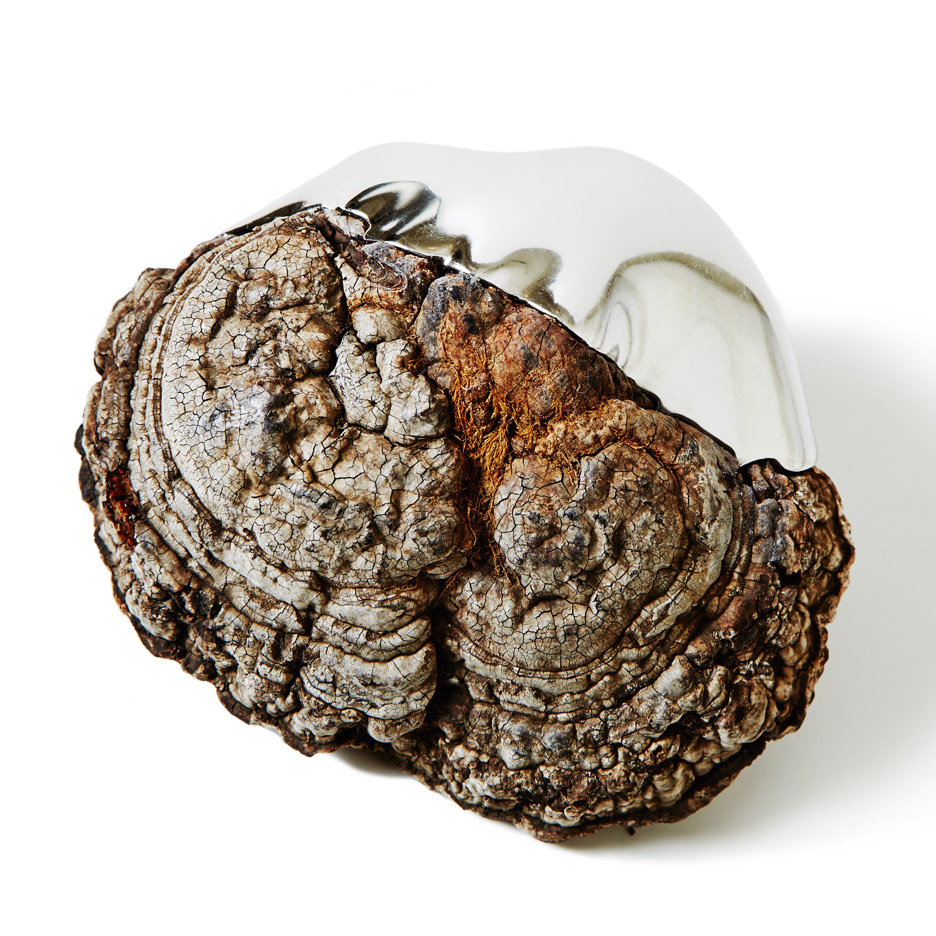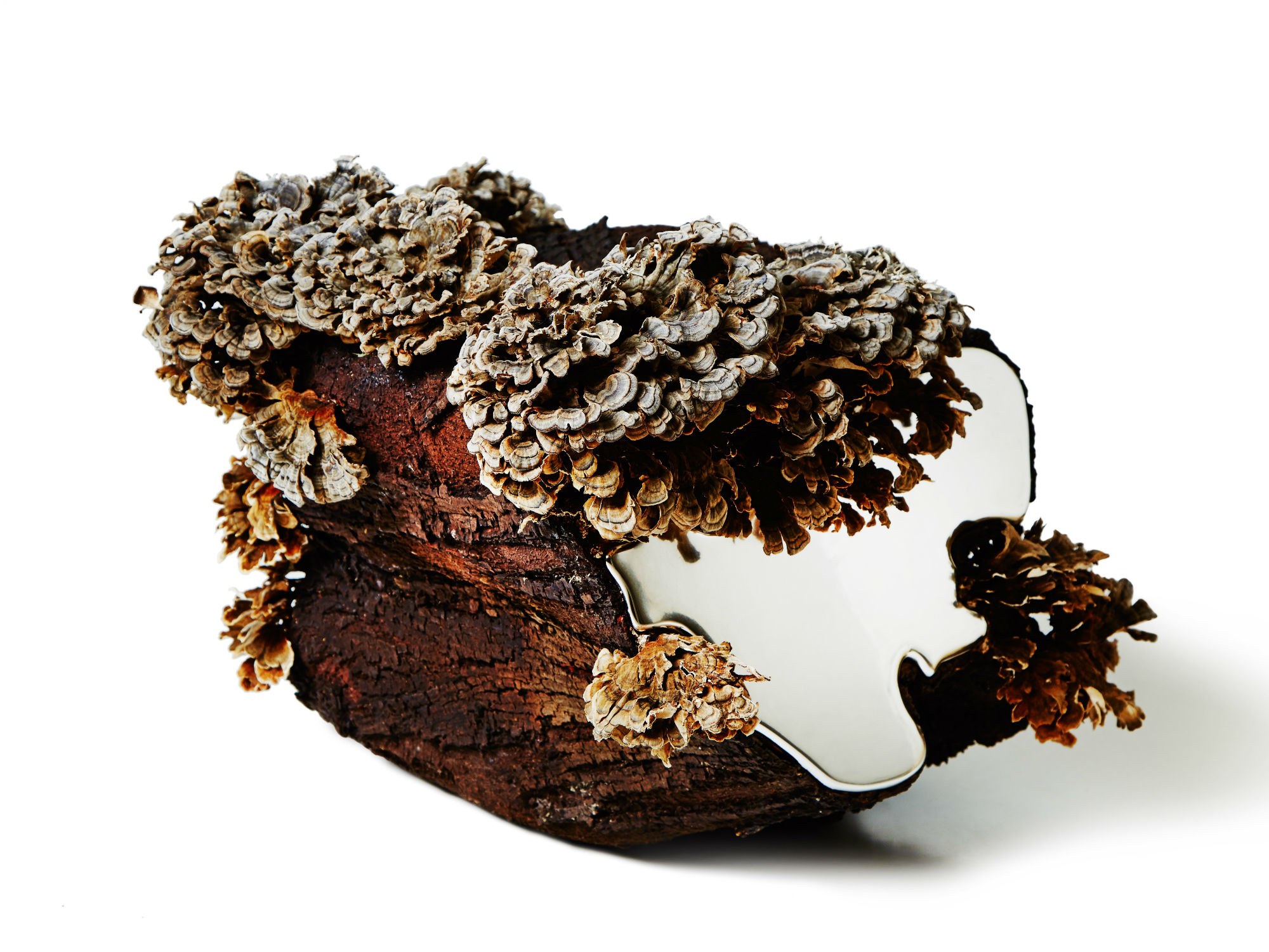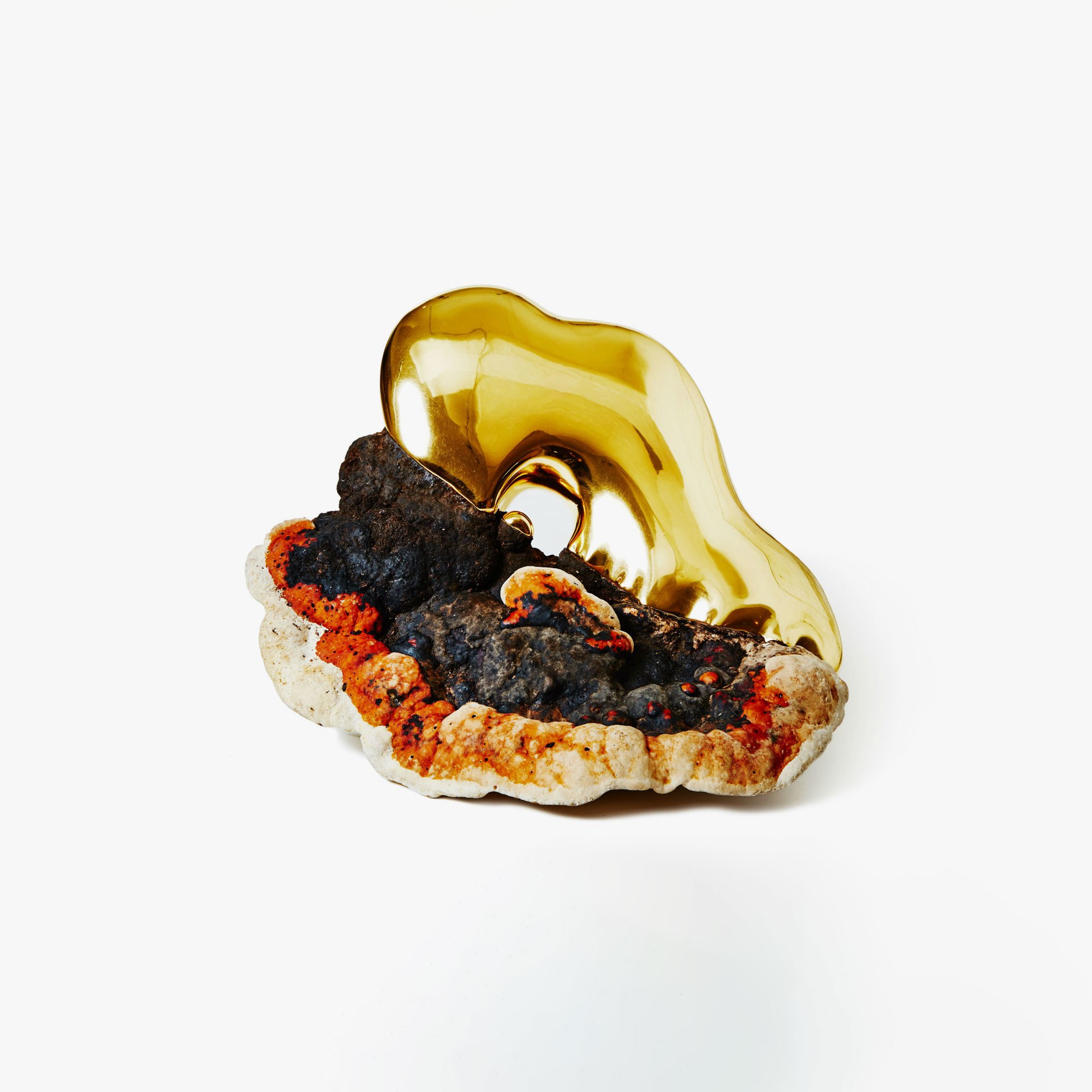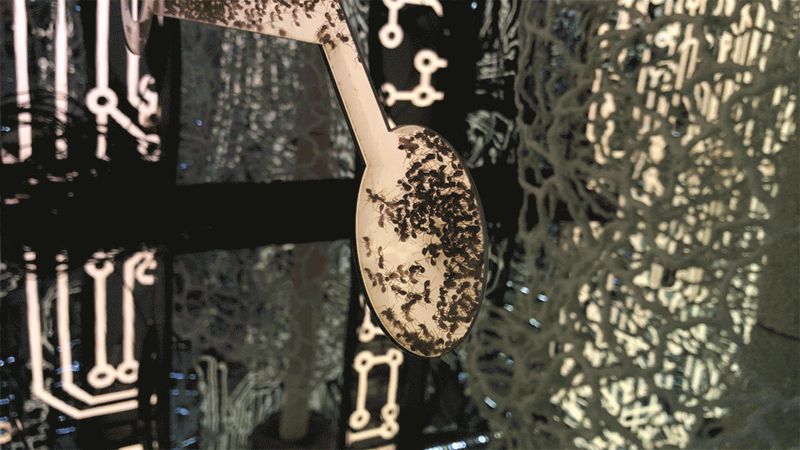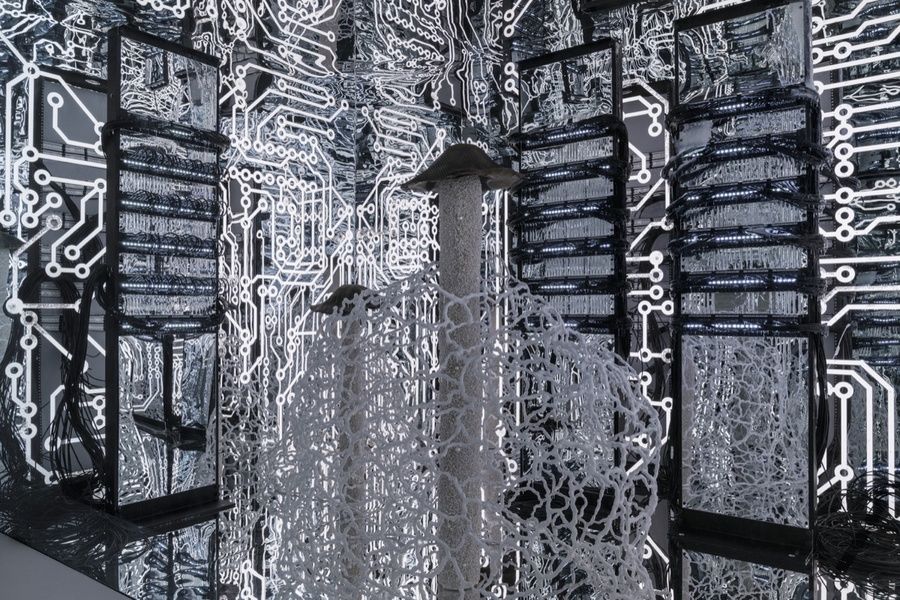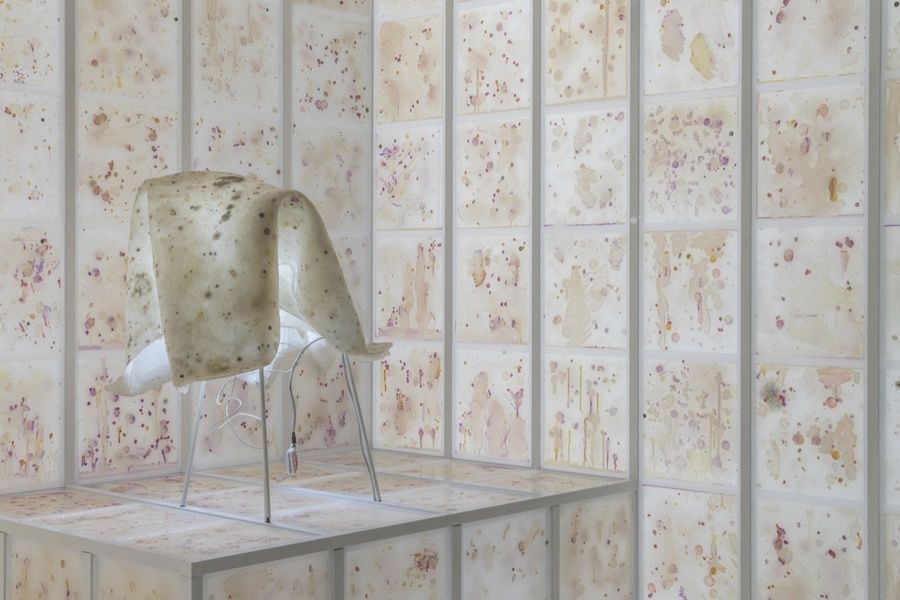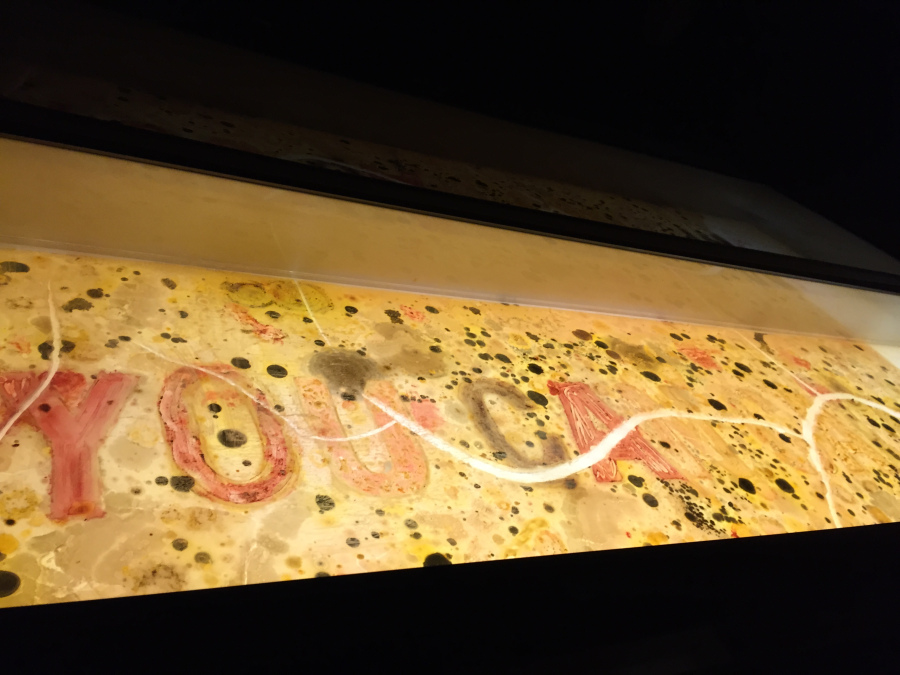Fungal Sculptures by Azuma Makoto
If you’ve ever looked at mushrooms growing in the forest and thought they looked like works of art, Azuma Makoto is right there with you. The Japanese artist debuted a series called ‘Polypore’ at Chamber in New York, pairing different species of fungus with materials like silver and gold.
“Artists in the modern age interpret our constantly evolving relationship to nature in works that undeniably express the now,” says Makoto. “The pieces in this collection speak to the theme of human-nature, and reflect a series of man-made interventions in materials, forms and principles from the natural world. This intersection of man and nature – which is both part of and separate from – combines to generate new beauty.”
Bacterial Works by Anicka Yi
Artist Anicka Yi’s conceptual works are often scientific and clinical in nature, often with a biological component. The Korean-born, self-taught artist deep fries flowers, displays live snails, produces fibers from kombucha byproducts and, for a project called ‘You Can Call Me F,’ even grows human-sourced bacteria and ‘paints’ it on agar-coated surfaces. For the latter, Yi asked one hundred women to swab their orifices and then used the samples as an artistic medium. Art in America Magazine says “The final work had an overwhelming smell, with notes of cheese and decay, both corporeally familiar and sensorially challenging.”
For her 2017 series Force Majeure, Yi tiled a section of the Guggenheim with white tiles used as bacterial breeding grounds turned into abstract paintings. “We sequenced the bacteria, and selected certain ones for their aesthetic quality,” she says. “As our nutritional biologist would tell you, each bacteria has a color, and that color has a function. There’s a reason for that purple in a purple bacteria.”
At the same exhibition, a piece called Lifestyle Wars sets thousands of live ants loose in a room-sized sculpture made of computer equipment, mirrored panels and fake mushrooms. After the exhibition, they were donated to laboratories (the law prohibits returning them to their original home.)
